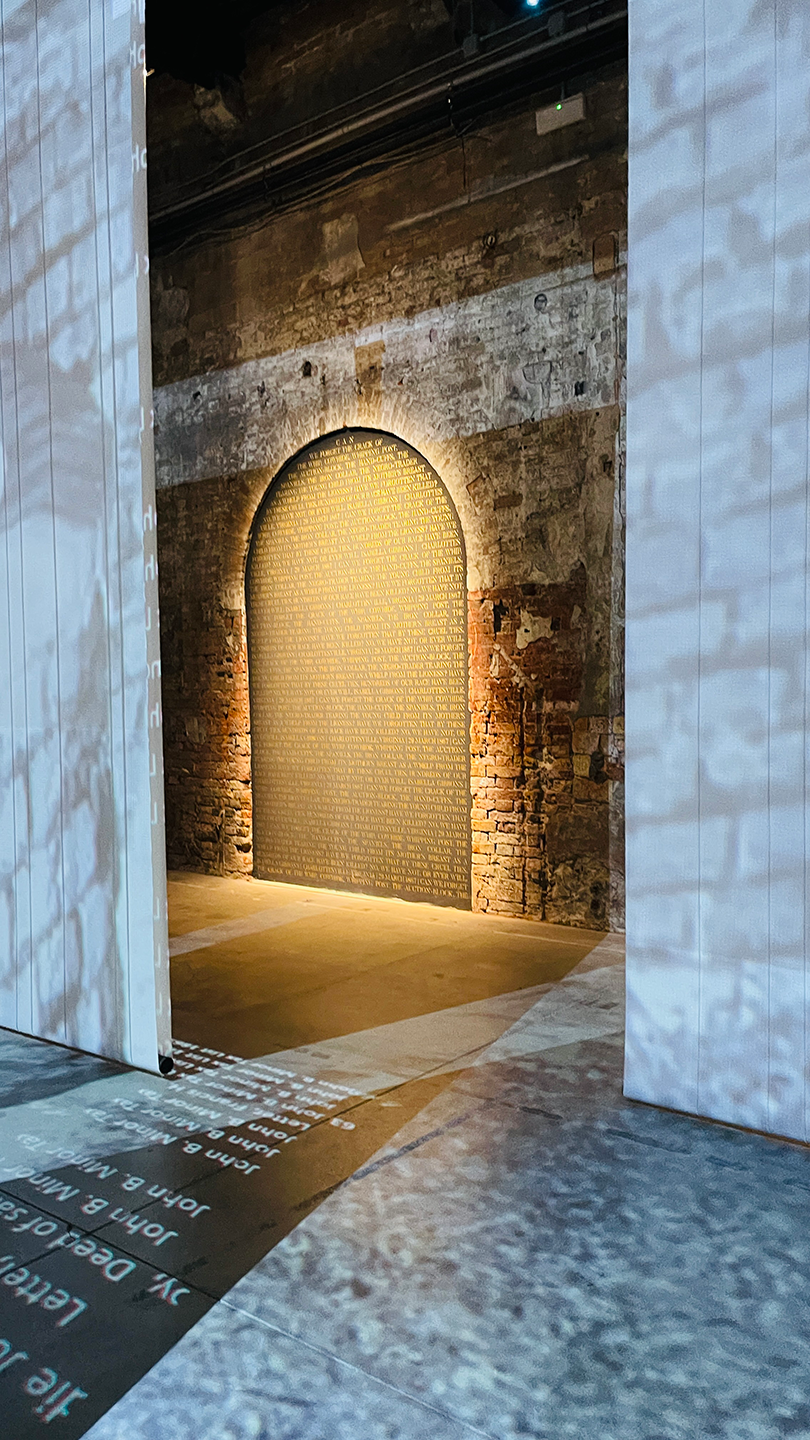
unknown, unknown (2023) at the Venice Architecture Biennale, installation view. photo / Mabel Wilson
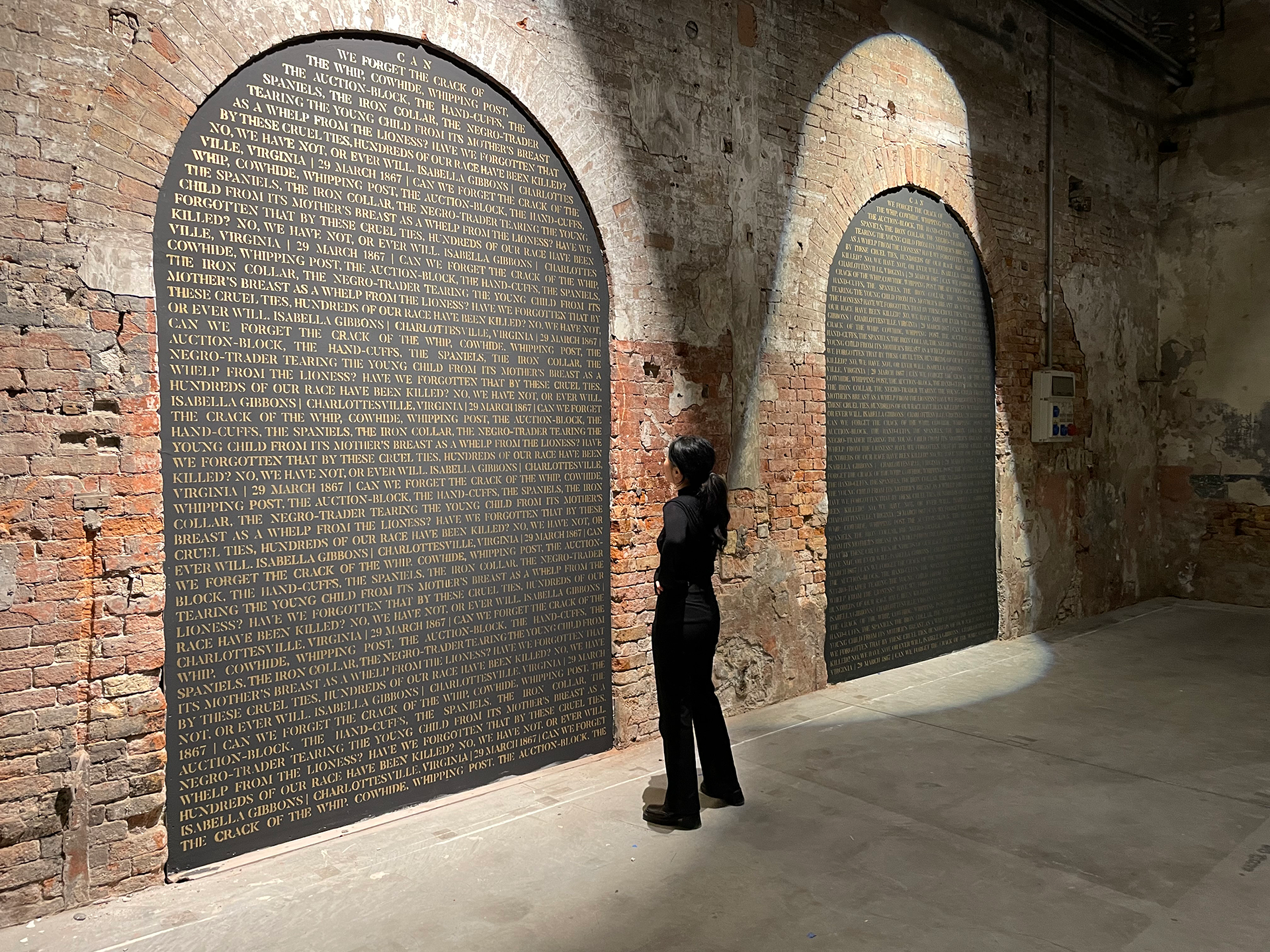
unknown, unknown (2023) at the Venice Architecture Biennale, installation view. photo / Justin Tan
Mabel O. Wilson, A.D. White Professor-at-Large at Cornell and Professor of Architecture and African American and African Diaspora Studies at Columbia University, has been widely recognized for her particular ability to thoughtfully, critically, and creatively disentangle complicated questions around race, historical narratives, archives, and the built environment, as well as to invite various publics into the thought process behind her often collaborative work. Wilson partnered with AAP architecture faculty Sean Anderson (B.Arch./B.S. '96), among others, on the acclaimed and impactful Reconstructions: Architecture and Blackness in America exhibition that opened at MoMA in 2021 after years of planning, and was a collaborator on the design team for the Memorial to Enslaved Laborers at the University of Virginia with J. Meejin Yoon, Gale and Ira Drukier Dean of the College of Architecture, Art, and Planning and Eric Höweler (B.Arch. '94, M.Arch. '96). Last year, Wilson, Yoon, and Höweler regrouped to revisit parts of the archive — absent and present — behind the memorial to create unknown, unknown, an immersive installation included in the 2023 Venice Architecture Biennale.
"Mabel Wilson is a preeminent scholar whose powerful work reopens and reactivates the historical record, shedding new light on the past, calling into question our assumptions about the present, and revealing possible futures," says Yoon. "Her intersecting methods as a historian, designer, and curator tell new stories, affirming a breadth of human experience that necessarily connects the past with the present moment. It is an honor and a pleasure to welcome Mabel to campus as A.D. White Professor-at-Large, and to our Cornell and AAP communities, where her contributions will no doubt add immense value for many years to come."
Beyond Wilson's curatorial and creative work, she has long been recognized for her scholarship on US History and African American and African Diaspora studies, for which she was recently awarded a John Simon Guggenheim Foundation Fellowship and the Berthold Leibinger Fellowship at the American Academy in Berlin. Her A.D. White Professors-at-Large keynote lecture, "Freedom and Unfreedom: The Construction of Washington City in the District of Columbia," will be held on March 7 at 5:15 p.m. in Milstein Hall Auditorium.

View of the Capitol of the United States after the conflagration in 1814 by Alexander Lawson including enslaved workers, from the abolitionist book A Portraiture of Domestic Slavery in the United States by Jesse Torrey. image / provided, courtesy of Library Company of Philadelphia.
Sean Anderson: Thank you, Mabel, for joining me today for a conversation that will continue and bring together many others when you come to Cornell in March. You've been in Berlin this past year, and so I wanted to ask: What have you been working on? And, how has living in Berlin been at a time like this?
Mabel Wilson: Thank you, Sean. I'm excited for many reasons for this opportunity — especially to connect with incredible colleagues, collaborators, friends, and interlocutors who are now at Cornell and have helped inform my work over the years. About Berlin, I was the Berthold Leibinger fellow at the American Academy in Berlin, which made it possible to focus on a manuscript called Building Race and Nation that I desperately want to finish.
Berlin was an interesting place to be given the book's theme, which looks at American civic architecture from the American War for Independence to the Civil War to understand how a racial imaginary was formed and has become what we now know, through racial science, as racial difference. In the US, early ideas around whiteness were triangulated between Blackness and the legacy of the enslavement of Africans, and Native Americans and the dispossession of their lands. And so, thinking about the built environment, race, and the history of Germany — where the nation-state and an understanding of European whiteness and what counts or who counts as European, and perhaps even white — offered some very instructive lessons.
With this project, one that I started eight years ago, I'm continuing to think through the many structures of power that shape our lived environment through architecture.
SA: Absolutely. And in so much of what we see, not only historically, but even today, architects and architecture are often complicit in creating and maintaining systems that rely on such structures to sustain continuities of power within the discipline, and also acts of building.
… Last year, you participated in the Venice Architecture Biennale, The Laboratory of the Future, curated by the incredible Lesley Lokko. And so, I wanted to ask you about the relationship between your scholarship and your work as an architect, designer, and artist with the biennale and your collaborative installation, unknown unknown.

unknown, unknown (2023) at the Venice Architecture Biennale, installation view. photo / Mabel Wilson
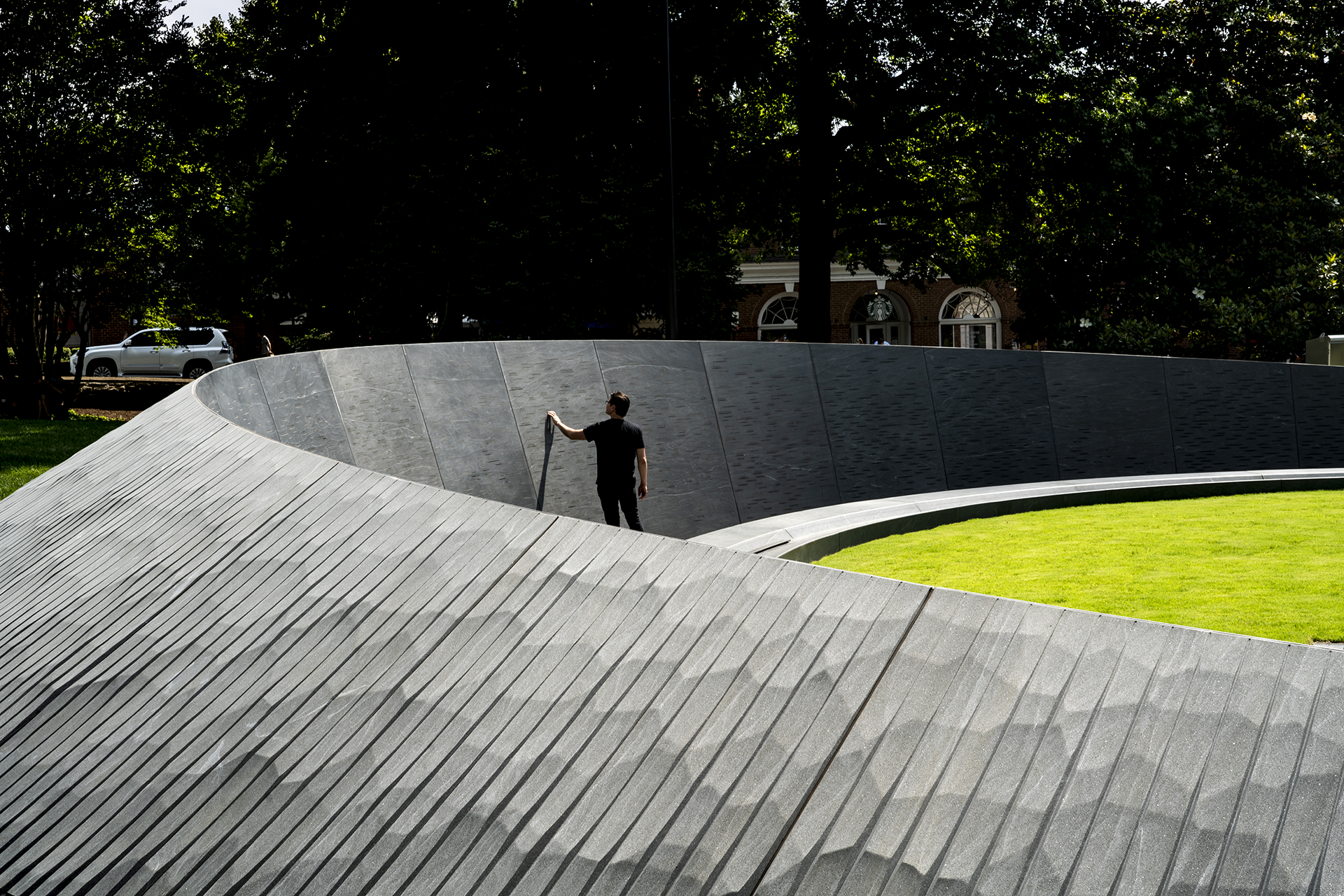
Memorial to Enslaved Laborers (2020) at the University of Virginia. photo / Sanjay Suchak

Wall of names at the Memorial to Enslaved Laborers (2020) at the University of Virginia. photo / Meejin Yoon

unknown, unknown (2023) at the Venice Architecture Biennale, installation view. photo / Mabel Wilson
MW: Lesley is fantastic and a longtime interlocutor. For the biennale, I wanted to investigate the problem of working with an incomplete archive of slavery. Those questions emerged from my work on the Memorial to Enslaved Laborers at the University of Virginia, which I worked on with Meejin Yoon, Eric Höweler, and a great team at UVA and the Charlottesville community.
When working on various parts of the memorial, we used a spreadsheet of the archival information on the enslaved at UVA to create its wall of names. There were members of the enslaved community that we would never know anything about, those we referred to as "unknown unknown." That absence stuck with me. Physically, we addressed it with gashes in the granite that we called "memory marks." 4,000 marks represent all of the people we don't know. For this piece, in particular, we wanted to consider if being unknown might be a kind of liberation. Because, when you're not captured in the historian's gaze, there's no evidence of the violence of your subjection, for example — evidence of your being raped, whipped, sold. Perhaps the archive absence could be a form of liberation.
From there, Meejin, Eric, data artist Josh Begley, and a great team got together again to work on an improvisational riff on the archival material we had collected for the memorial and how the unknown unknown returns from the repressed both visually and sonically. For the sound, Josh and our incredible team created a beautiful sonic intervention — where the two atonal bass tones modulate between signaling known or unknown. The pace of images and the bass notes are structured by the spreadsheet; to deconstruct it as a form of enclosure.
SA: I remember approaching the exceptional installation in the Arsenale at a hinge point in both the exhibition and building, and you heard the work before you saw it. It was moving — a provocative reminder that the known is often misunderstood, and the unknown is rarely seen, but felt. Yet, perhaps we can embody both simultaneously as an act of repair and refusal.
MW: Yes, it was visceral. Sound was essential.
Work by Mario Gooden featured in the Reconstructions: Architecture and Blackness in America exhibition (2020) at MoMA. photo / Robert Gerhardt
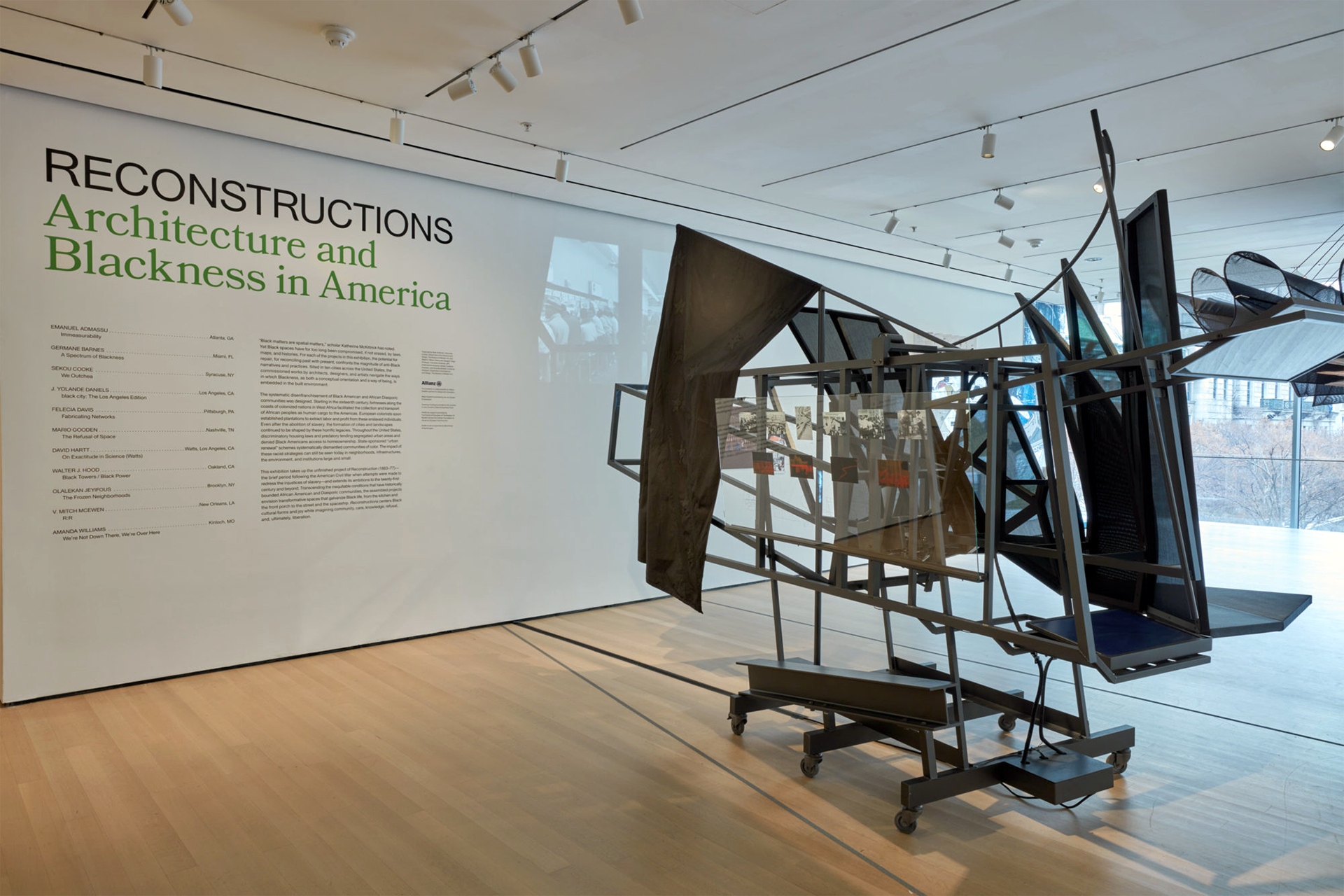
Black Reconstructions Collective banner at the Reconstructions: Architecture and Blackness in America exhibition (2021) at MoMA. photo: Robert Gerhardt
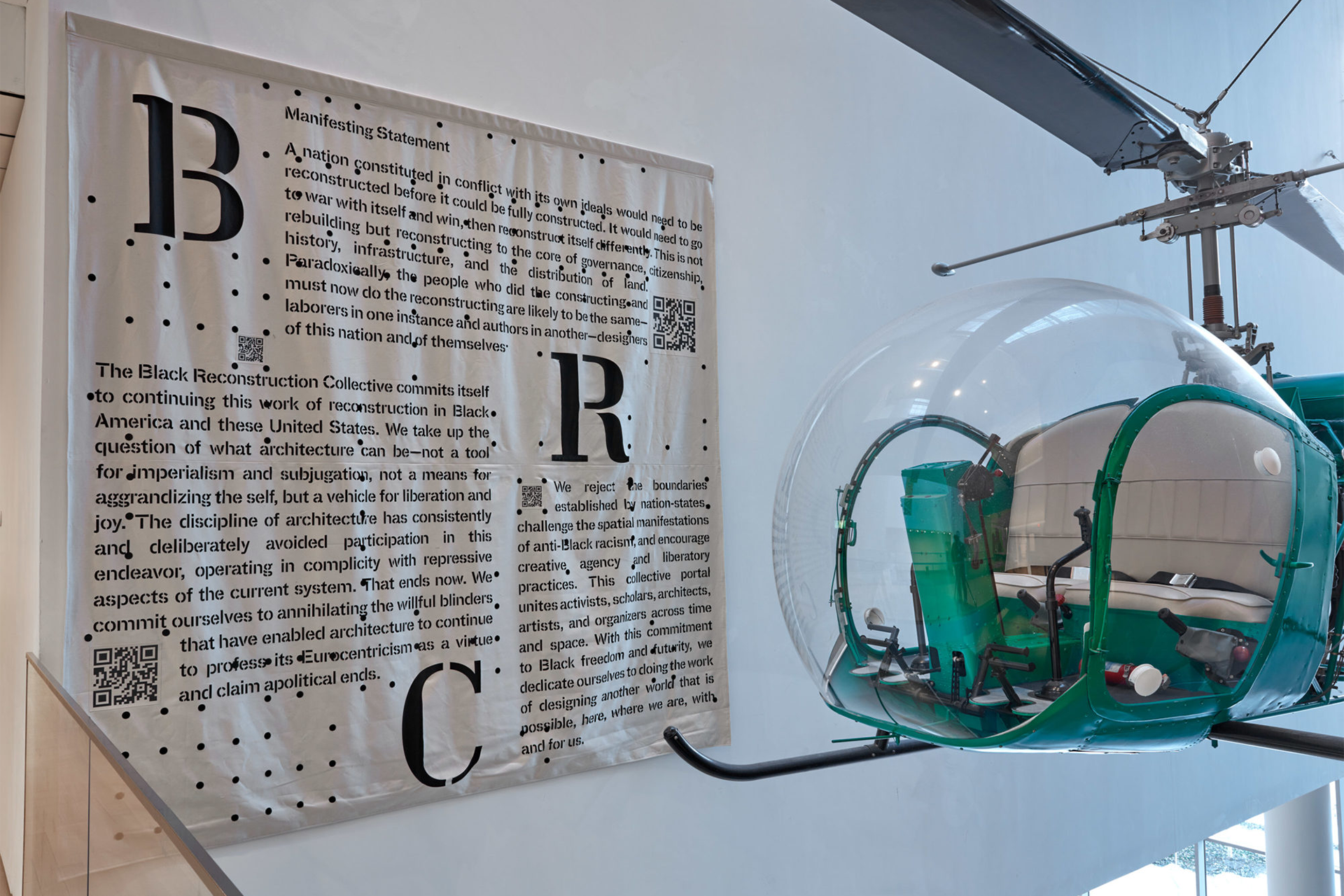
Work by Sekou Cooke (B.Arch. '99) featured in the Reconstructions: Architecture and Blackness in America exhibition (2021) at MoMA. photo / Robert Gerhardt
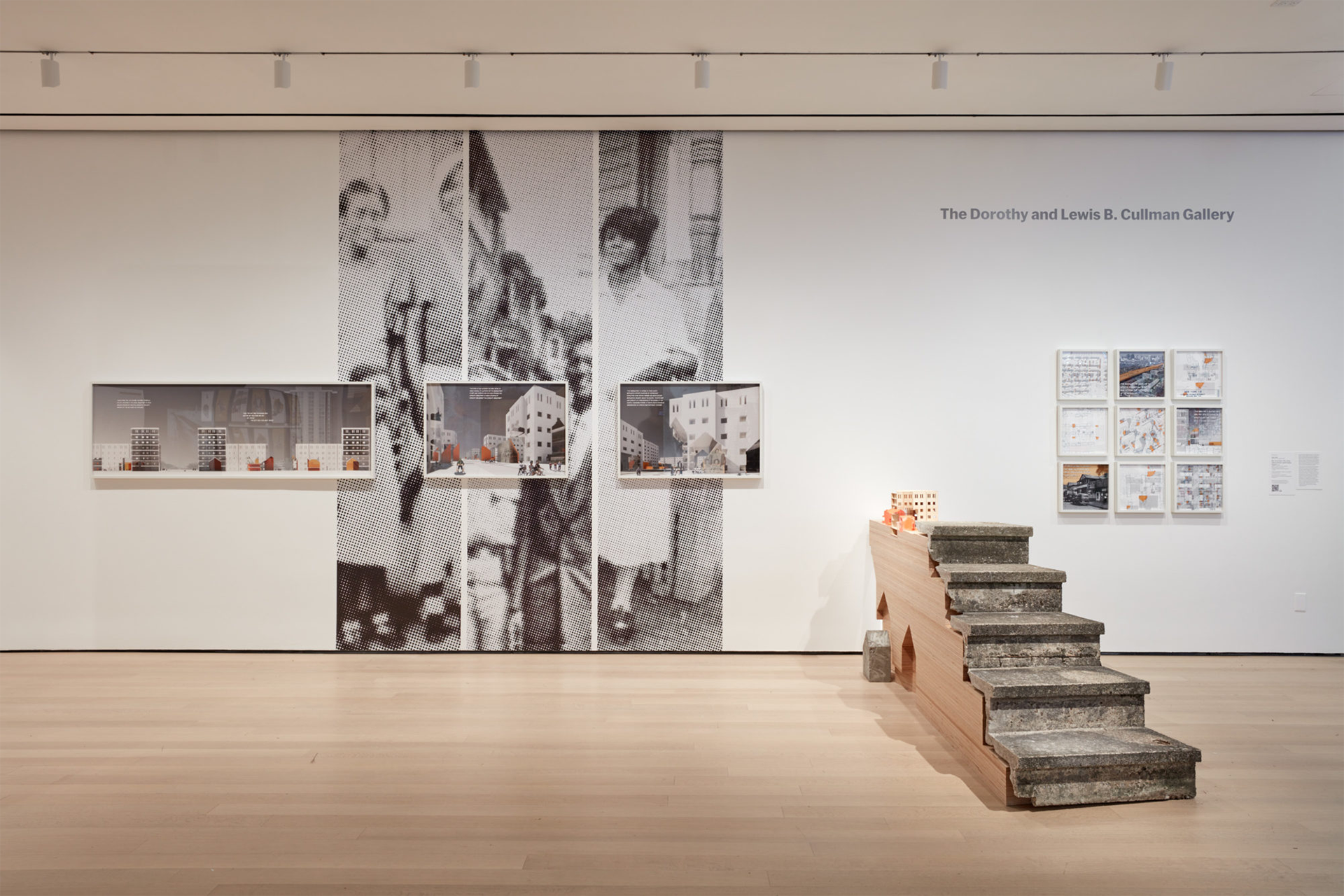
Work by Amanda Williams (B.Arch. '97) featured in the Reconstructions: Architecture and Blackness in America exhibition (2021) at MoMA. photo / Robert Gerhardt

Work by Lek Jeyifous (B.Arch. '99) featured in the Reconstructions: Architecture and Blackness in America exhibition (2021) at MoMA. photo / Robert Gerhardt
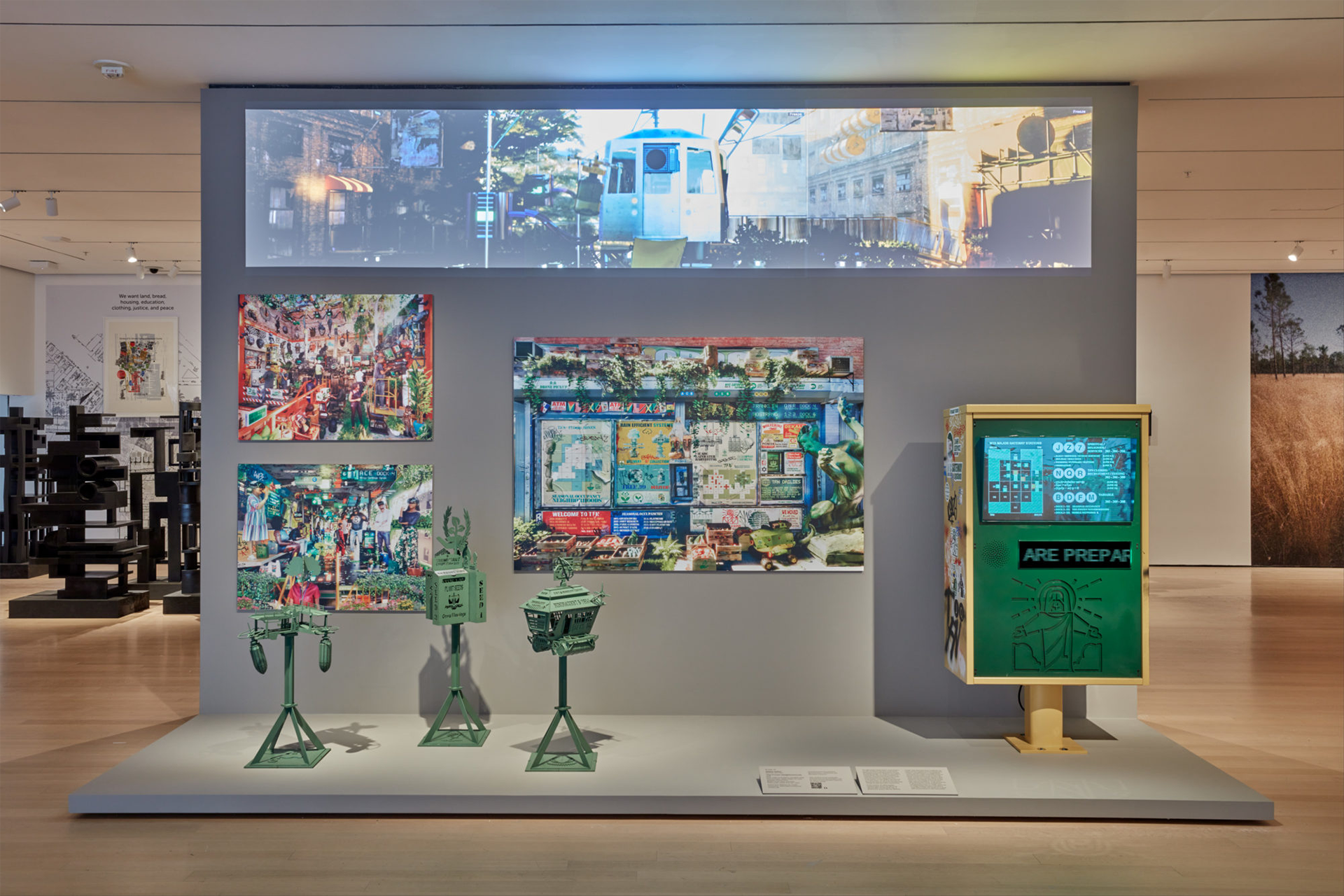
Work by Mario Gooden featured in the Reconstructions: Architecture and Blackness in America exhibition (2020) at MoMA. photo / Robert Gerhardt
SA: I also want to talk a little bit about Reconstructions: Architecture and Blackness in America. It was three years ago now that the exhibition opened and even longer ago that we first convened to discuss the possibility of making the exhibition. Looking back, it encompassed the most profound set of conversations I could have ever been fortunate to be a part of. The exhibition was opened — and subsequently closed after a short time — during a moment of great global calamity. Years later, what do you think about it all?
MW: It was such a multi-pronged project. One of the things you and I were both committed to was thinking about the exhibition as a catalyst. For the exhibition, we formed our own archive because MoMA's storied archive of modern architecture and design in the world had nothing by a Black architect or designer in the collection. So once again, there's an archival silence or an absence, and typically MoMA draws upon its archive of modernism for exhibitions. Thus, what do you do when there's nothing there? Strategizing how one builds an archive and a legacy for an exhibition that might also exist external to the institution was an invaluable lesson. I was also heartened by your efforts to bring work into that archive. Acknowledging that there were talented, radical architects and designers who should have been included in the collection — including, as you know, some Cornell grads such as Amanda Williams, Olalekan Jeyifous, and Sekou Cooke, who are also among the founding members of the Black Reconstruction Collective.
SA: Since we first convened around the exhibition, I keep returning to notions of potential. There's an active catalyzing of ideas, of questioning, of remembering, and of seeing that so much of what the exhibition was about was not what was on the walls, necessarily, but about people reckoning with themselves, reckoning with an institution, and reckoning with the city beyond about the narratives put forth by our eleven extraordinary contributors. And so, I wanted to ask you about potential, and whether you have perhaps felt, seen, or experienced a change since Reconstructions, or following the Venice Biennale last year?
MW: Perhaps. There are different kinds of configurations of events and collectives and ways of doing work that aren't conventional architectural practice per se. I think a lot of people have been crafting other ways of making new work in the built environment that don't rely on these kinds of conventional configurations. That I find very exciting. At the biennale, I found collaboratives that were thinking about questions of environmental justice in Uganda related to questions another group was exploring in Sweden. There are new threads of ideas and forms of practice that bring people together. Artists were included in the mix at Venice, which opened new trajectories of practice. The richness of such an endeavor all depends on the questions that frame the curatorial direction so that work from around the world can be made legible.
SA: Thank you, as ever, Mabel. We all look forward to having you join us on campus.